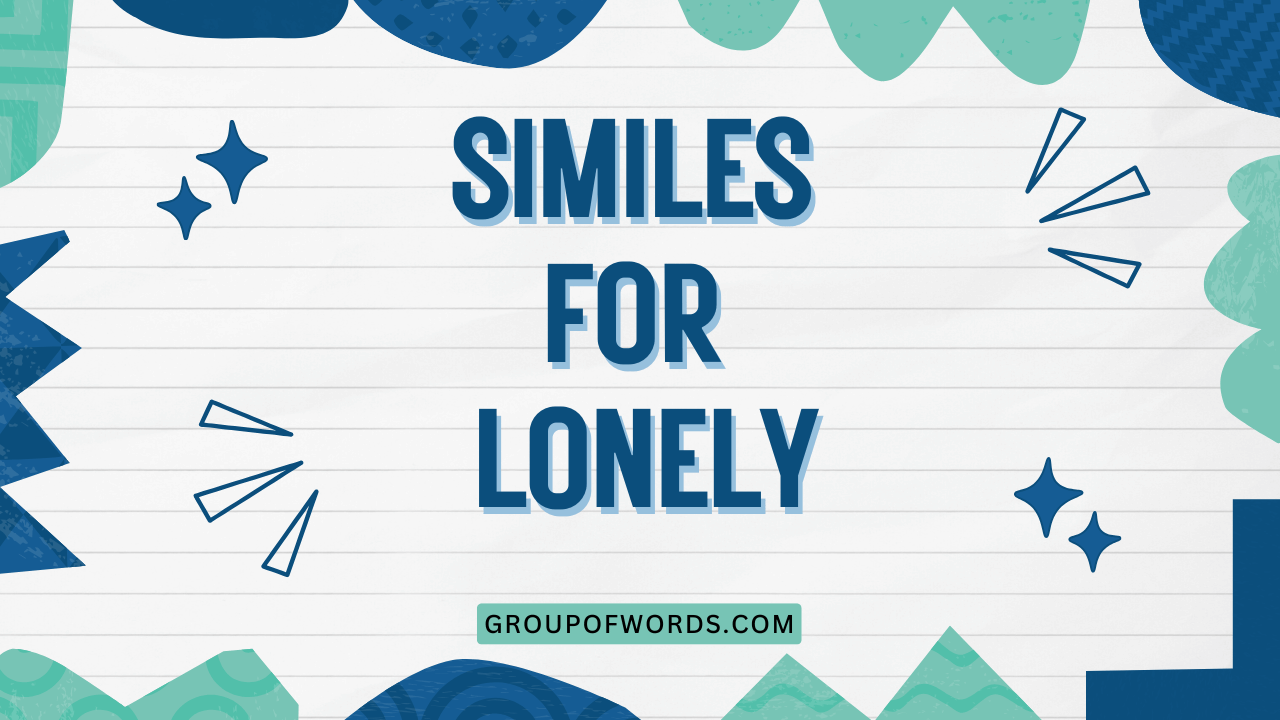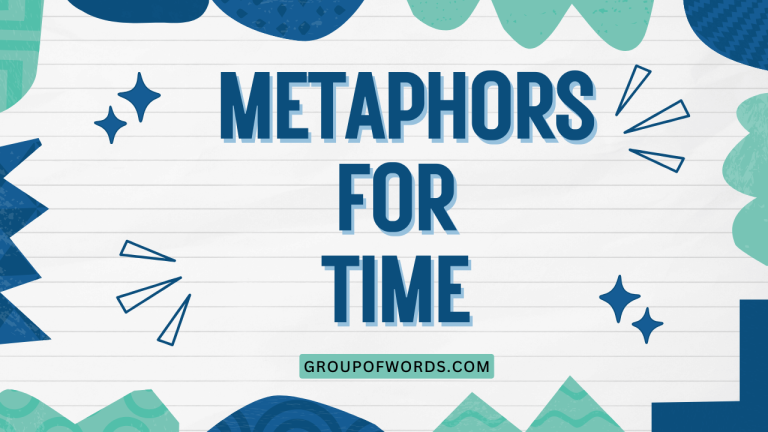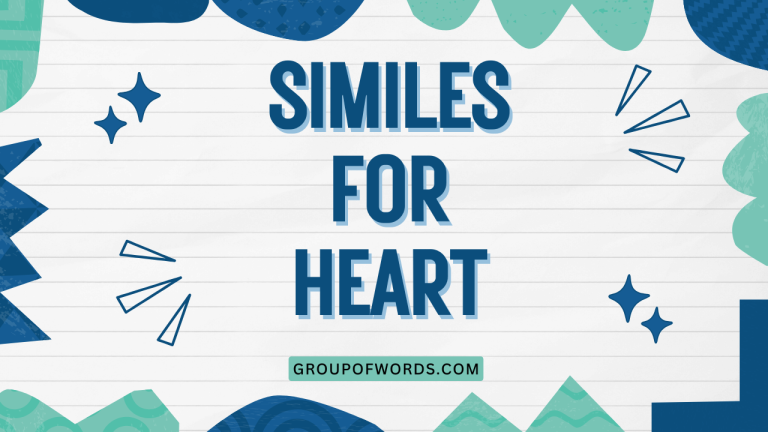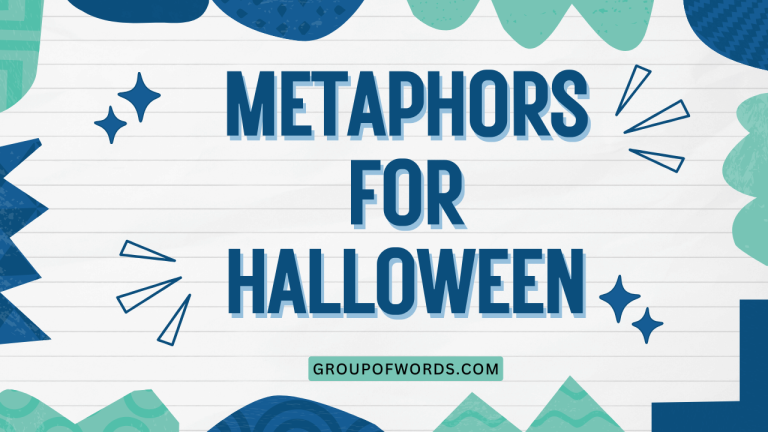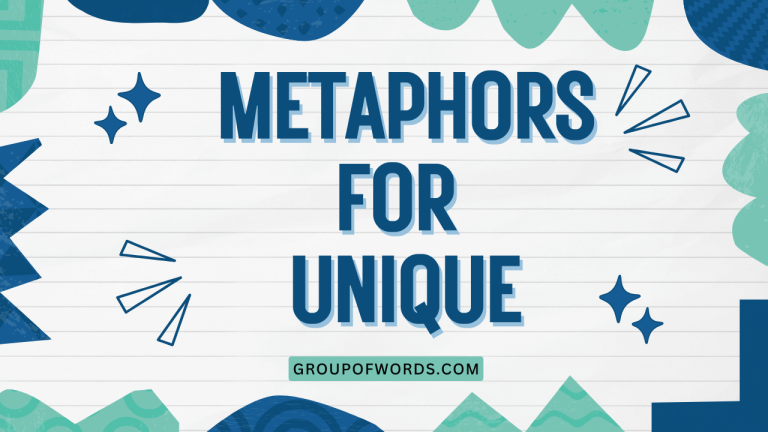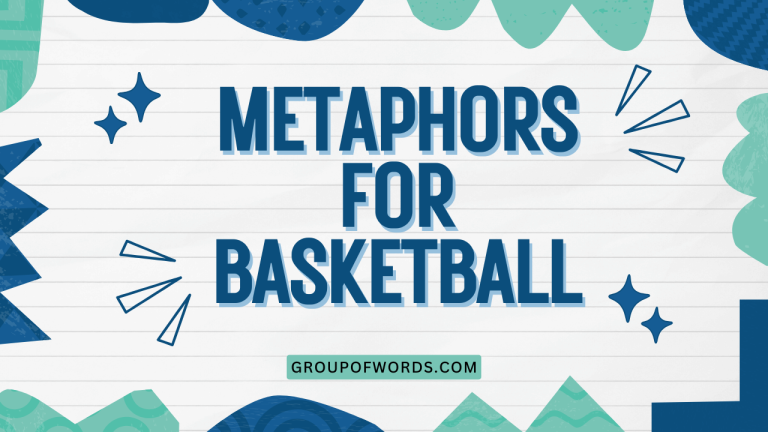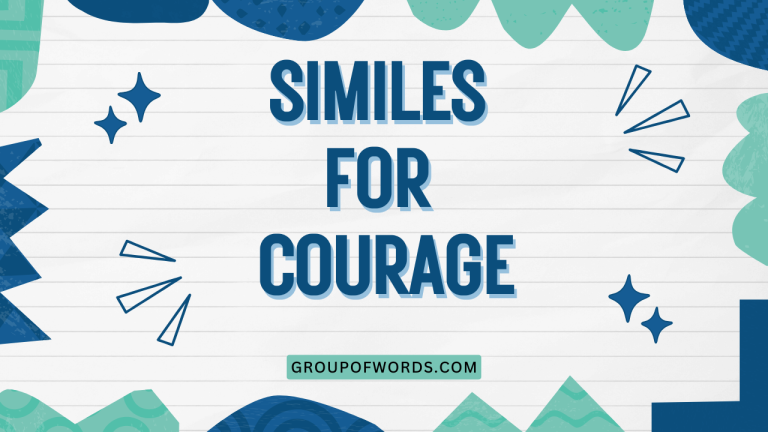Similes for Lonely: A Comprehensive Guide
Understanding how to express feelings of loneliness with vivid language is crucial for effective communication and creative writing. Similes, which compare one thing to another using “like” or “as,” provide a powerful tool for conveying the emotional depth of loneliness.
This article will explore a wide range of similes for loneliness, offering definitions, examples, and practical exercises to enhance your understanding and usage. Whether you are a student, writer, or simply someone interested in improving your English, this guide will help you master the art of using similes to describe and understand the feeling of being lonely.
Table of Contents
- Introduction
- Definition of Simile
- Structural Breakdown of Similes for Lonely
- Types of Loneliness and Corresponding Similes
- Examples of Similes for Lonely
- Usage Rules for Similes
- Common Mistakes When Using Similes
- Practice Exercises
- Advanced Topics: Nuances in Simile Usage
- Frequently Asked Questions
- Conclusion
Introduction
Loneliness is a universal human emotion, but describing its nuances can be challenging. Similes offer a powerful way to articulate the feeling of isolation and disconnect.
They allow us to paint vivid pictures with words, making the abstract emotion of loneliness more tangible and relatable. By comparing loneliness to something familiar, we can evoke a deeper understanding and empathy in our audience.
This article will guide you through the intricacies of crafting effective similes for loneliness, providing you with the tools to express this complex emotion with greater precision and impact.
Definition of Simile
A simile is a figure of speech that compares two unlike things using the words “like” or “as.” It’s a tool used to create a more vivid and descriptive image in the reader’s mind. Similes help to clarify and emphasize a particular quality or characteristic by drawing a parallel to something more familiar.
They are a fundamental element of figurative language and are widely used in both poetry and prose.
In the context of describing emotions, similes can be incredibly effective. They allow us to move beyond simple statements and create a richer, more evocative portrayal of feelings like loneliness.
Instead of just saying “I am lonely,” a simile allows us to say “I am as lonely as a cloud,” immediately conjuring a specific image and emotional resonance.
Classification of Similes
Similes are generally classified as a type of figurative language, specifically under the umbrella of comparisons. They are distinct from metaphors, which also compare two unlike things but do so by stating that one *is* the other, rather than using “like” or “as.” Similes can also be categorized based on the type of comparison they make (e.g., comparing size, color, feeling) or the intensity of the comparison.
Function of Similes
The primary function of a simile is to enhance description and understanding. By drawing a comparison between two dissimilar things, a simile can illuminate a particular aspect of the subject being described.
In the case of loneliness, similes can help to convey the feeling of isolation, emptiness, or disconnection in a way that is both vivid and relatable. They add depth and emotional resonance to writing and speech.
Contexts for Using Similes
Similes are appropriate in a wide range of contexts, from creative writing and poetry to everyday conversation. They are particularly useful when you want to:
- Add color and detail to your writing
- Make an abstract concept more concrete
- Evoke a specific emotion or feeling
- Clarify a complex idea
When describing loneliness, similes can be used in personal narratives, fictional stories, poems, and even in therapeutic settings to help individuals express their feelings.
Structural Breakdown of Similes for Lonely
A simile consists of three key components: the subject, the linking word, and the object of comparison. In the context of describing loneliness, the subject is the person or thing experiencing the loneliness, the linking word is either “like” or “as,” and the object of comparison is something that is known to evoke a similar feeling of isolation or emptiness.
The basic formula for a simile is: Subject + Linking Word + Object of Comparison. For example, in the simile “He felt as lonely as a lighthouse keeper,” “He” is the subject, “as” is the linking word, and “a lighthouse keeper” is the object of comparison.
The Subject
The subject is the entity experiencing the loneliness. This could be a person, an animal, or even an inanimate object being personified.
The subject should be clearly identified so that the comparison is easily understood. For instance, “She,” “The old house,” or “The abandoned car” can all serve as the subject in a simile describing loneliness.
The Linking Word
The linking word is the crucial element that connects the subject to the object of comparison. The two most common linking words are “like” and “as.” While they are often interchangeable, “as” is generally considered more formal.
The choice between “like” and “as” often depends on the rhythm and flow of the sentence.
The Object of Comparison
The object of comparison is the element that is being used to illustrate the feeling of loneliness. It should be something that readily evokes a sense of isolation, emptiness, or detachment.
Common objects of comparison include deserted landscapes, solitary animals, isolated structures, or even abstract concepts like silence or darkness. The effectiveness of the simile depends on the reader’s ability to connect the object of comparison with the feeling of loneliness.
Types of Loneliness and Corresponding Similes
Loneliness is not a monolithic emotion; it manifests in various forms. Understanding these different types of loneliness can help you craft more nuanced and effective similes.
Here are some common types of loneliness and examples of similes that capture their essence:
Social Isolation
Social isolation refers to the lack of meaningful social connections. It’s the feeling of being cut off from others and lacking a sense of belonging.
Similes for social isolation often evoke images of physical separation or exclusion.
Examples: As lonely as a single tree in a vast field. Like a ship lost at sea. As isolated as an island in the middle of the ocean.
Emotional Loneliness
Emotional loneliness stems from a lack of intimate relationships and emotional support. It’s the feeling of not having someone to confide in or share your innermost thoughts and feelings with.
Similes for emotional loneliness often focus on the absence of warmth, connection, and understanding.
Examples: As lonely as a stone statue in a park. Like a book with no readers. As empty as a well with no water.
Existential Loneliness
Existential loneliness is a deeper, more profound sense of isolation that arises from the awareness of our own mortality and the inherent solitude of existence. It’s the feeling of being fundamentally alone in the universe.
Similes for existential loneliness often evoke images of vastness, insignificance, and the unknown.
Examples: As lonely as a single star in the night sky. Like a grain of sand on a boundless beach. As insignificant as a whisper in a hurricane.
Situational Loneliness
Situational loneliness is a temporary feeling of disconnection that arises from specific circumstances, such as moving to a new city, losing a loved one, or experiencing a major life change. Similes for situational loneliness often focus on the feeling of being out of place or disconnected from one’s familiar surroundings.
Examples: As lonely as a new student in a strange school. Like a misplaced puzzle piece. As lost as a tourist in a foreign country.
Examples of Similes for Lonely
Here are several tables filled with examples of similes for lonely, categorized by the type of imagery they evoke. Each table provides a wide range of options to suit different contexts and writing styles.
The aim is to provide a comprehensive resource for expressing the feeling of loneliness with creativity and precision.
The following table focuses on similes that use natural elements to describe loneliness. Nature often provides powerful metaphors for isolation and solitude, making these similes particularly evocative.
| Simile | Explanation |
|---|---|
| As lonely as a cloud | Suggests a solitary figure drifting aimlessly. |
| Like a single leaf falling from a tree | Implies isolation and detachment from a larger group. |
| As isolated as a mountain peak | Conveys a sense of being elevated but also cut off. |
| Like a lone wolf howling at the moon | Emphasizes the feeling of being alone and unheard. |
| As desolate as a windswept desert | Highlights the emptiness and barrenness of loneliness. |
| Like a solitary tree in a barren field | Shows the stark contrast between the individual and the surrounding environment. |
| As forlorn as a shipwrecked sailor | Suggests abandonment and vulnerability. |
| Like a single raindrop in the ocean | Emphasizes the feeling of insignificance and being lost. |
| As lonely as a lighthouse keeper on a stormy night | Conveys isolation amidst chaos. |
| Like a forgotten path in the woods | Suggests being overlooked and unused. |
| As lonely as a star in the daytime sky | Highlights invisibility and being overshadowed. |
| Like a single flower in a field of weeds | Implies being surrounded by negativity and not belonging. |
| As isolated as a frozen lake in winter | Conveys a sense of coldness and stagnation. |
| Like a pebble on an empty beach | Emphasizes being small and insignificant in a vast space. |
| As lonely as a scarecrow in a field | Highlights the feeling of being stationary and unnoticed. |
| Like a dried-up riverbed | Suggests emptiness and the absence of life. |
| As forlorn as a bird with a broken wing | Conveys vulnerability and inability to connect. |
| Like a lone iceberg drifting in the sea | Emphasizes isolation and a sense of danger. |
| As lonely as the last leaf clinging to a branch in winter | Highlights resilience but also impending loss. |
| Like a seed that never sprouts | Suggests unfulfilled potential and isolation. |
| As lonely as a silent forest | Conveys the absence of sound and connection. |
| Like a single ant lost from its colony | Implies disorientation and the loss of belonging. |
| As isolated as a remote island | Highlights the feeling of being geographically and emotionally cut off. |
| Like a fallen nestling on the ground | Emphasizes vulnerability and abandonment. |
| As lonely as a shadow in the night | Conveys invisibility and being overlooked. |
This table features similes that use man-made objects and structures to illustrate loneliness. These similes often highlight the feeling of being abandoned, forgotten, or out of place in a human-dominated world.
| Simile | Explanation |
|---|---|
| As lonely as an abandoned house | Suggests neglect and emptiness. |
| Like a broken toy | Implies being discarded and unwanted. |
| As isolated as a lighthouse | Conveys being alone while guiding others. |
| Like a forgotten book on a shelf | Emphasizes being overlooked and unread. |
| As desolate as a ghost town | Highlights the absence of life and activity. |
| Like a single streetlamp in a dark city | Shows the contrast between the individual and the surrounding environment. |
| As forlorn as a rusty swing set in an empty park | Suggests a loss of joy and connection. |
| Like a broken clock | Emphasizes being out of sync and disconnected. |
| As lonely as a telephone booth in the age of cell phones | Conveys obsolescence and irrelevance. |
| Like a misplaced button | Suggests being out of place and unnecessary. |
| As lonely as a single chair in a large room | Highlights isolation within a group setting. |
| Like a closed store on a busy street | Implies being unavailable and disconnected. |
| As isolated as a security camera | Conveys constant observation without interaction. |
| Like a flickering lightbulb | Emphasizes instability and impending darkness. |
| As lonely as an old record player with no records | Highlights the absence of joy and entertainment. |
| Like a blank canvas | Suggests emptiness and a lack of expression. |
| As forlorn as a gravestone in an overgrown cemetery | Conveys a sense of being forgotten and unvisited. |
| Like a locked diary | Emphasizes privacy and emotional isolation. |
| As lonely as a vending machine in an empty office | Highlights being available but unwanted. |
| Like a single sock after laundry day | Suggests incompleteness and loss. |
| As lonely as an unread email in a flooded inbox | Conveys being overlooked and ignored. |
| Like a silent piano in a concert hall | Implies unfulfilled potential and lack of audience. |
| As isolated as a satellite orbiting a dead planet | Highlights being disconnected and purposeless. |
| Like a parked car with a flat tire | Emphasizes immobility and frustration. |
| As lonely as a single key without a lock | Conveys uselessness and lack of purpose. |
This table presents similes that use abstract concepts and feelings to describe loneliness. These similes often delve into the emotional and psychological aspects of loneliness, capturing the internal experience of isolation.
| Simile | Explanation |
|---|---|
| As lonely as silence | Suggests the absence of communication and connection. |
| Like a void | Implies emptiness and a lack of substance. |
| As isolated as a secret | Conveys being hidden and unshared. |
| Like a forgotten dream | Emphasizes the fleeting nature of connection. |
| As desolate as a broken heart | Highlights emotional pain and loss. |
| Like a shadow without a source | Suggests a lack of identity and purpose. |
| As forlorn as a lost memory | Conveys the pain of forgotten connections. |
| Like an echo in an empty room | Emphasizes the lack of response and validation. |
| As lonely as a question with no answer | Highlights the frustration of unanswered needs. |
| Like a whisper in a hurricane | Suggests being unheard and insignificant. |
| As lonely as a single thought in a crowded mind | Conveys internal isolation and disconnection. |
| Like a hope that never materializes | Implies disappointment and unfulfilled desires. |
| As isolated as a fear that cannot be shared | Conveys vulnerability and the burden of secrecy. |
| Like a song with no melody | Emphasizes a lack of harmony and joy. |
| As lonely as a belief that nobody shares | Highlights ideological isolation. |
| Like a story with no ending | Suggests incompleteness and lack of closure. |
| As forlorn as a promise that is never kept | Conveys betrayal and disappointment. |
| Like a dance with no partner | Emphasizes the absence of connection and interaction. |
| As lonely as an apology that is never accepted | Highlights unresolved conflict and disconnection. |
| Like a journey with no destination | Suggests aimlessness and lack of purpose. |
| As lonely as a smile that is never returned | Conveys rejection and disconnection. |
| Like a gift that is never opened | Implies unappreciated effort and disconnection. |
| As isolated as a dream that is only yours | Highlights personal and unique experience of loneliness. |
| Like a question that is never asked | Emphasizes the absence of curiosity and connection. |
| As lonely as a tear that is never cried | Conveys hidden pain and emotional suppression. |
Usage Rules for Similes
While similes are a powerful tool for creative expression, there are certain rules to follow to ensure they are used effectively and appropriately. These rules relate to clarity, originality, and context.
1. Clarity: The comparison should be clear and easily understood. The object of comparison should be something that is familiar to the audience, or the simile will lose its impact. Avoid obscure or overly complex comparisons.
2. Originality: Strive for originality in your similes. Overused similes can become clichéd and lose their effectiveness. Try to find fresh and unexpected comparisons that will surprise and delight your audience.
3. Relevance: The comparison should be relevant to the subject being described. The object of comparison should share a meaningful characteristic with the subject, or the simile will feel forced and unnatural.
4. Context: Consider the context in which the simile is being used. The tone and style of the simile should be appropriate for the overall tone and style of the writing or speech. Avoid using overly dramatic or exaggerated similes in formal settings.
5. Avoid Mixed Metaphors/Similes: Do not mix metaphors and similes. Each should stand alone, as mixing them can create confusing and illogical images. For example, avoid sentences like “He was as quick as a fox, but also a sitting duck.”
Common Mistakes When Using Similes
Even experienced writers can make mistakes when using similes. Here are some common errors to avoid:
1. Clichés: Using overused similes like “as busy as a bee” or “as quiet as a mouse” can make your writing seem unoriginal and predictable. Strive to create fresh and unique comparisons.
2. Illogical Comparisons: Make sure the comparison makes sense. Comparing something to something completely unrelated will confuse your readers.
3. Overly Complex Similes: Keep your similes concise and easy to understand. Avoid adding too many details or unnecessary words.
4. Incorrect Use of “Like” and “As”: Remember that “like” is a preposition, while “as” is a conjunction or adverb. Use them correctly to avoid grammatical errors.
Here’s a table illustrating common mistakes and their corrections:
| Incorrect Simile | Corrected Simile | Explanation |
|---|---|---|
| He was as busy as a bee, but also as lonely as a cloud. | He was as lonely as a cloud. | Avoid clichés. Focus on conveying loneliness. |
| She felt as lonely as a doorknob. | She felt as lonely as an abandoned house. | Ensure the comparison is logical and evokes loneliness. |
| He was as lonely as a very, very, very long and winding road with many twists and turns and no end in sight. | He was as lonely as a long and winding road. | Keep the simile concise and easy to understand. |
| She felt like she was as lonely as a ghost. | She felt as lonely as a ghost. | Avoid redundant use of “like” and “as” |
Practice Exercises
Test your understanding of similes for loneliness with these practice exercises. Fill in the blanks with appropriate objects of comparison to create effective similes.
Exercise 1: Fill in the Blanks
| Question | Answer |
|---|---|
| 1. He felt as lonely as a _______. | 1. He felt as lonely as a lighthouse keeper. |
| 2. She was like a _______, lost in a crowd. | 2. She was like a single raindrop, lost in a crowd. |
| 3. The old house stood as lonely as a _______. | 3. The old house stood as lonely as a forgotten tombstone. |
| 4. He felt as isolated as a _______ on a deserted island. | 4. He felt as isolated as a castaway on a deserted island. |
| 5. Her voice was like a _______ in an empty room. | 5. Her voice was like a faint echo in an empty room. |
| 6. The town felt as desolate as a _______ after the storm. | 6. The town felt as desolate as a ghost town after the storm. |
| 7. He was as lonely as a _______ without a home. | 7. He was as lonely as a stray dog without a home. |
| 8. She felt like a _______ with no one to talk to. | 8. She felt like a book with no one to talk to. |
| 9. The park was as lonely as a _______ in the middle of winter. | 9. The park was as lonely as a graveyard in the middle of winter. |
| 10. He felt as isolated as a _______ orbiting a distant planet. | 10. He felt as isolated as a satellite orbiting a distant planet. |
Exercise 2: Create Your Own Similes
Write your own similes for loneliness using the following prompts:
| Question | Example Answer |
|---|---|
| 1. Describe the loneliness of a traveler in a foreign land. | 1. As lonely as a translator without a language. |
| 2. Describe the loneliness of an elderly person living alone. | 2. Like a forgotten photograph in an old album. |
| 3. Describe the loneliness of a child at a new school. | 3. As lonely as a new puzzle piece in a mismatched set. |
| 4. Describe the loneliness of an artist who is not appreciated. | 4. Like a painting hidden in a dark attic. |
| 5. Describe the loneliness of a writer with writer’s block. | 5. As lonely as a pen with no ink. |
| 6. Describe the loneliness of a musician without an audience. | 6. Like a silent violin in an empty concert hall. |
| 7. Describe the loneliness of a tree in a barren landscape. | 7. As lonely as a scarecrow in an empty field. |
| 8. Describe the loneliness of a single light in a dark city. | 8. Like a drop of water in the desert. |
| 9. Describe the loneliness of someone who has lost a loved one. | 9. As lonely as a ship without a harbor. |
| 10. Describe the loneliness of a person who feels misunderstood. | 10. Like a message in a bottle lost at sea. |
Advanced Topics: Nuances in Simile Usage
For advanced learners, it’s important to understand the subtle nuances that can make a simile truly effective. This includes considering the emotional impact of the comparison, using similes to create specific moods, and understanding the cultural context in which the simile is being used.
1. Emotional Impact: Choose objects of comparison that evoke the desired emotion. For example, comparing loneliness to a “cold wind” will create a different emotional impact than comparing it to a “lost puppy.” Consider the specific feeling you want to convey and choose your simile accordingly.
2. Mood Creation: Use similes to create a specific mood or atmosphere in your writing. For example, using similes that evoke images of darkness and silence will create a sense of foreboding or isolation. Using similes that evoke images of light and warmth will create a sense of hope or comfort.
3. Cultural Context: Be aware of the cultural context in which the simile is being used. Some objects of comparison may have different connotations in different cultures. For example, comparing loneliness to a “desert” may be more effective in a culture where deserts are common, while comparing it to a “snowstorm” may be more effective in a culture where snow is common.
4. Subtlety: Sometimes the most effective similes are the most subtle. Avoid being too heavy-handed or obvious in your comparisons. Allow the reader to make the connection between the subject and the object of comparison on their own.
Frequently Asked Questions
Here are some frequently asked questions about using similes to describe loneliness:
1. What’s the difference between a simile and a metaphor?
A simile compares two unlike things using “like” or “as,” while a metaphor states that one thing *is* another. For example, “He is as lonely as a cloud” (simile) versus “He is a lonely cloud” (metaphor).
2. How can I avoid using clichés when creating similes?
Brainstorm a wide range of possible comparisons and choose the most original and unexpected one. Think about specific details and sensory experiences that relate to the feeling of loneliness.
Use a thesaurus to find alternative words and phrases.
3. How do I know if my simile is effective?
Ask yourself if the comparison is clear, relevant, and evocative. Does it create a vivid image in your mind?
Does it accurately convey the feeling of loneliness? Get feedback from others to see if they understand and appreciate your simile.
4. Can I use similes in formal writing?
Yes, but use them sparingly and choose comparisons that are appropriate for the tone and style of the writing. Avoid overly dramatic or informal similes.
5. How many similes should I use in a piece of writing?
Use similes judiciously. Too many similes can make your writing seem cluttered and distracting.
Focus on using a few well-chosen similes that have a significant impact.
6. What types of words work best in similes for loneliness?
Words that evoke isolation, emptiness, and disconnection are effective. Consider using words related to nature (e.g., deserted landscapes, solitary animals), inanimate objects (e.g., abandoned buildings, broken toys), or abstract concepts (e.g., silence, darkness).
7. Is it okay to use negative comparisons in similes for loneliness?
Yes, negative comparisons can be very effective. For example, “He felt as lonely as a room without laughter” or “She was like a song without music.” These comparisons highlight the absence of something positive and emphasize the feeling of loneliness.
8. How can I make my similes more specific and impactful?
Add details to your similes to make them more specific and impactful. For example, instead of saying “He was as lonely as a house,” say “He was as lonely as an abandoned house with boarded-up windows and overgrown weeds.” The added details create a more vivid and memorable image.
Conclusion
Mastering the art of using similes to describe loneliness can significantly enhance your writing and communication skills. By understanding the structure, types, and usage rules of similes, you can craft powerful and evocative comparisons that resonate with your audience.
Remember to strive for clarity, originality, and relevance in your similes, and avoid common mistakes like using clichés or illogical comparisons. The exploration of the different types of loneliness – social, emotional, existential, and situational – allows for a more nuanced application of similes, creating deeper emotional resonance.
Practice is key to developing your skill in creating effective similes. Experiment with different objects of comparison and pay attention to the emotional impact of your words.
By continuously honing your craft, you can become a master of using similes to express the complex and multifaceted emotion of loneliness. Don’t be afraid to experiment and find your own unique voice in describing this universal human experience.
